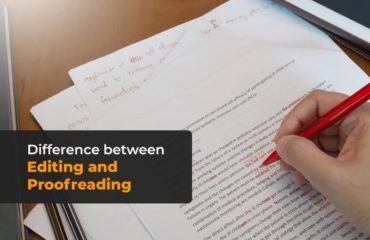
Table of Contents
Navigating the world of academic writing can be daunting, especially when it comes to citing sources accurately. Whether you’re a seasoned scholar or a student embarking on your first research project, understanding the intricacies of APA 7 citations is crucial. This blog post will serve as a comprehensive APA 7 citation guide, offering a step-by-step APA 7 citation tutorial, easy APA 7 citation tips, and detailed APA 7 citation examples. By the end, you’ll have a solid grasp of the APA 7 citation style explained clearly and concisely.
Introduction
Citing sources correctly is an essential part of academic integrity and scholarly communication. The APA (American Psychological Association) citation style is widely used across various disciplines, particularly in the social sciences. The seventh edition of the APA Publication Manual introduced several changes and updates to the citation rules, making it vital to stay current. This APA 7 citation guide will cover everything you need to know, from the basics of how to cite in APA 7 format to specific examples and practical tips. Let’s dive into the world of APA 7 citations and ensure your references are spot on.
Understanding the Basics of APA 7 Citations
What is APA 7 Citation Style?
The APA 7 citation style is a set of guidelines for formatting academic papers and citing sources within the text and in the reference list. These guidelines ensure consistency, credibility, and clarity in scholarly writing. The APA 7 citation style explained in this guide will help you understand how to format various types of sources and structure your references correctly.
Key Changes in APA 7
The seventh edition of the APA Manual brought several significant updates, including:
- The use of “et al.” for in-text citations of works with three or more authors.
- Simplified citation formats for books and journal articles.
- The inclusion of website names in references.
- More flexible guidelines for citing online sources and social media.
These changes aim to make citations more straightforward and accessible. This APA 7 referencing guide will provide you with the latest citation rules and how to apply them in your work.
Step-by-Step APA 7 Citation Tutorial
In-Text Citations
In-text citations in APA 7 format typically include the author’s last name and the year of publication. For direct quotes, you should also include the page number. Here’s a step-by-step APA 7 citation tutorial for in-text citations:
- Single Author: (Smith, 2020)
- Two Authors: (Smith & Jones, 2020)
- Three or More Authors: (Smith et al., 2020)
- Direct Quote: (Smith, 2020, p. 15)
Reference List
The reference list in APA 7 format should be on a new page at the end of your document, titled “References.” Entries should be alphabetized by the last name of the first author of each work. Here’s a detailed APA 7 referencing guide for common sources:
- Books:
- Author, A. A. (Year). Title of work: Capital letter also for subtitle. Publisher.
- Example: Smith, J. A. (2020). Understanding psychology: An introduction. Psychology Press.
- Journal Articles:
- Author, A. A., Author, B. B., & Author, C. C. (Year). Title of article. Title of Periodical, volume number(issue number), pages. https://doi.org/xx.xxx/yyyy
- Example: Brown, L. M., & Green, P. T. (2020). The effects of sleep on memory. Journal of Sleep Research, 29(3), 123-134. https://doi.org/10.1111/jsr.12841
- Websites:
- Author, A. A. (Year, Month Date). Title of webpage. Site Name. URL
- Example: National Institute of Mental Health. (2021, July 23). Anxiety disorders. NIMH. https://www.nimh.nih.gov/health/topics/anxiety-disorders/index.shtml
Common Challenges and How to Overcome Them
Citing Online Sources
One of the most frequently encountered challenges is how to cite online sources correctly. The APA 7 citation guide simplifies this with clear rules. Ensure you include the author, publication date, title, website name, and URL. If the publication date is not available, use “n.d.” (no date). For instance:
- Example: American Psychological Association. (n.d.). APA 7 citation style guide. APA. https://www.apa.org/style/7th-edition
Handling Multiple Authors
When dealing with multiple authors, the APA 7 citation rules can seem complex. For works with up to 20 authors, list all authors in the reference list. For 21 or more authors, list the first 19, followed by an ellipsis (…), and then the last author’s name. Here’s an example:
- Example: Williams, J. A., Smith, L. B., Brown, M. C., Green, D. T., Johnson, K. R., Martin, P. J., … Thompson, R. S. (2020). Comprehensive analysis of social behavior. Journal of Social Psychology, 45(2), 123-145.
Easy APA 7 Citation Tips for Beginners
Consistency is Key
Ensure consistency in your citations. Double-check that all in-text citations match their corresponding references in the reference list. This APA 7 citation for beginners tip can help avoid common errors and maintain the credibility of your work.
Utilize Citation Tools
There are numerous citation tools and software available that can generate APA 7 citations automatically. Tools like Zotero, EndNote, and the citation features in Microsoft Word can save you time and ensure accuracy. However, always double-check the generated citations for correctness.
Double-Check Your Formatting
Formatting errors are common but avoidable. Pay attention to details such as italicizing book and journal titles, using sentence case for article titles, and ensuring proper indentation. This APA 7 citation tutorial emphasizes the importance of meticulous formatting to avoid deductions on academic papers.
Advanced Tips for Mastering APA 7 Citations
Mastering DOI and URL Usage
The Digital Object Identifier (DOI) is a unique alphanumeric string that provides a permanent link to online content. When available, always include the DOI in your citation. If no DOI is available, use the URL. This APA 7 referencing guide ensures you handle digital sources correctly, enhancing the reliability of your citations.
Handling Secondary Sources
Sometimes you might need to cite a source that you found cited in another source. This is called a secondary source. While it’s always best to cite primary sources, if you must cite a secondary source, use the following format:
- In-text citation: (Smith, 2020, as cited in Brown, 2021)
- Reference list: Include only the source you actually read (in this case, Brown).
Staying Updated
APA citation rules evolve, and staying updated is crucial. Regularly review the latest guidelines from reliable sources such as the APA website or updated style manuals. This step-by-step APA 7 citation tutorial recommends subscribing to APA newsletters or academic forums for updates.
Conclusion
Mastering APA 7 citations is a valuable skill for any academic writer. This comprehensive APA 7 citation guide has covered the essentials, from understanding the basics to advanced tips for ensuring accuracy and consistency in your citations. With these easy APA 7 citation tips and examples, you can confidently apply the APA 7 format in your scholarly work. Remember, accurate citations not only uphold academic integrity but also enhance the credibility of your research.
We hope this APA 7 citation for beginners and advanced users alike has been helpful. If you have any questions or additional tips, feel free to leave a comment below. Let’s keep the conversation going and support each other in mastering APA 7 citations!


